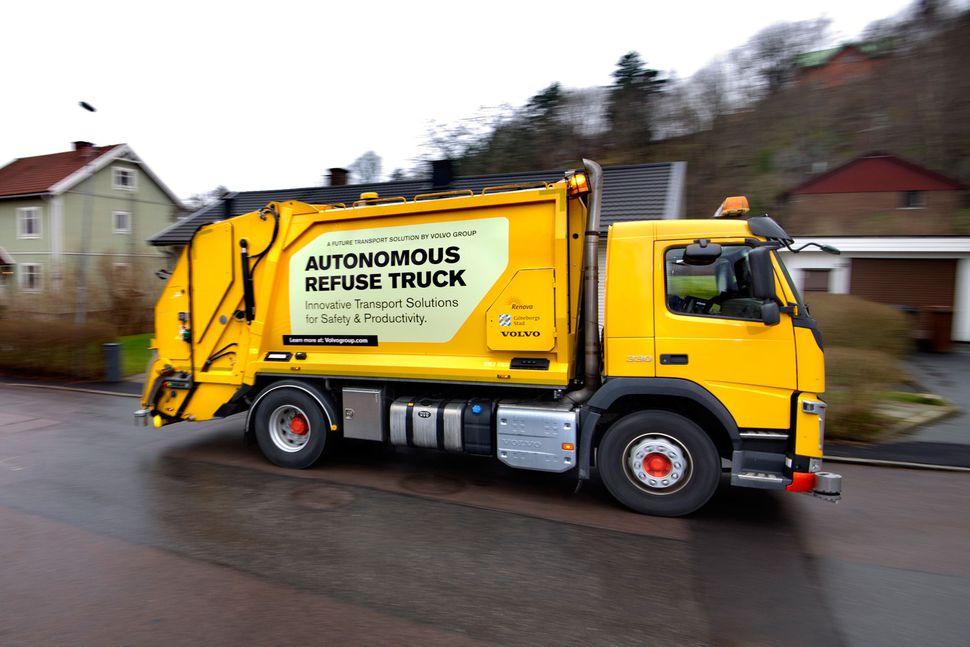Could garbage collection be handled by robotic vehicles? That’s the question Volvo Trucks is looking to answer as it tests out a self-driving garbage truck in Sweden.
The truck company has a venture with Swedish waste management company Renova to learn how autonomous refuse vehicles can improve safety, make trash collection more efficient and reduce driver injury.
“Driving a heavy commercial vehicle in an urban residential area with narrow streets and vulnerable road users naturally imposes major demands on safety, even when the vehicle’s speed doesn’t exceed a normal walking pace,” said Carl Johan Almqvist, the traffic and product safety director for Volvo Trucks.
The test vehicle travels very slowly and continuously monitors its surroundings. It stops if sensors detect any potential obstacles.
The work is parallel to the testing of an autonomous Volvo truck operating in the Kristineberg Mine in northern Sweden that started last year.
When Volvo brings its automated garbage truck to a new neighborhood, a driver is in the cab, guiding the vehicle through the collection route so that the on-board system can use its sensors and GPS technology to monitor and map the area.
That gives the computer the information it needs so that the next time the truck enters the neighborhood, it knows where to go and where the garbage bins are located.
When the truck reaches a previously mapped area, the driver switches on the autonomous system and climbs out of the cab. The worker walks to the back of the truck and brings out the bins just as they would if they were driving the vehicle along the route. The truck empties the trash containers and then backs up to the next bin location. The driver walks alongside and makes sure the bin is in place for the truck to empty.
“By reversing the truck, the driver can constantly remain close to the compactor unit instead of having to repeatedly walk between the rear and the cab every time the truck is on the move” said Hans Zachrisson, Renova’s strategic development manager.
“Since the driver doesn’t have to climb in and out of the cab at every start and stop, there’s less risk of work related injuries such as strain on the knees and other joints,” Zachrisson said.
Walking beside the truck as it travels in reverse also is safer than driving the vehicle because the operator has such a better view of the surroundings, Volvo said.
In some areas of Sweden, heavy commercial vehicles are prohibited from traveling in reverse for safety reasons. Other areas require a second operator to stand behind the truck to ensure that the road is clear, a rule that adds to labor expenses.
The Volvo tests are designed to eliminate such issues.
The vehicle’s sensors monitor the area in a 360-degree view around the refuse truck, making driving safe no matter the direction. Another benefit is that autonomous vehicle systems canoptimize gear changes, steering and speed to reduce fuel consumption and emissions, Volvo said.
Still, the truck manufacturer said not to expect self-driving garbage trucks plying through neighborhoods soon.
“A lot of research, testing and development remains before self-driving refuse trucks can become a reality,” the company said in a statement.
This test project runs through the end of 2017.
Volvo said it believes self-driving trucks will be introduced first for other uses, such as in mines and cargo terminals, where they will be traveling within strictly confined areas. But the company is testing autonomous truck systems for many uses. Earlier this year it tested digitally-tethered big rigs traveling in a platoon on a Los Angeles freeway and also tested an autonomous mining truck.



